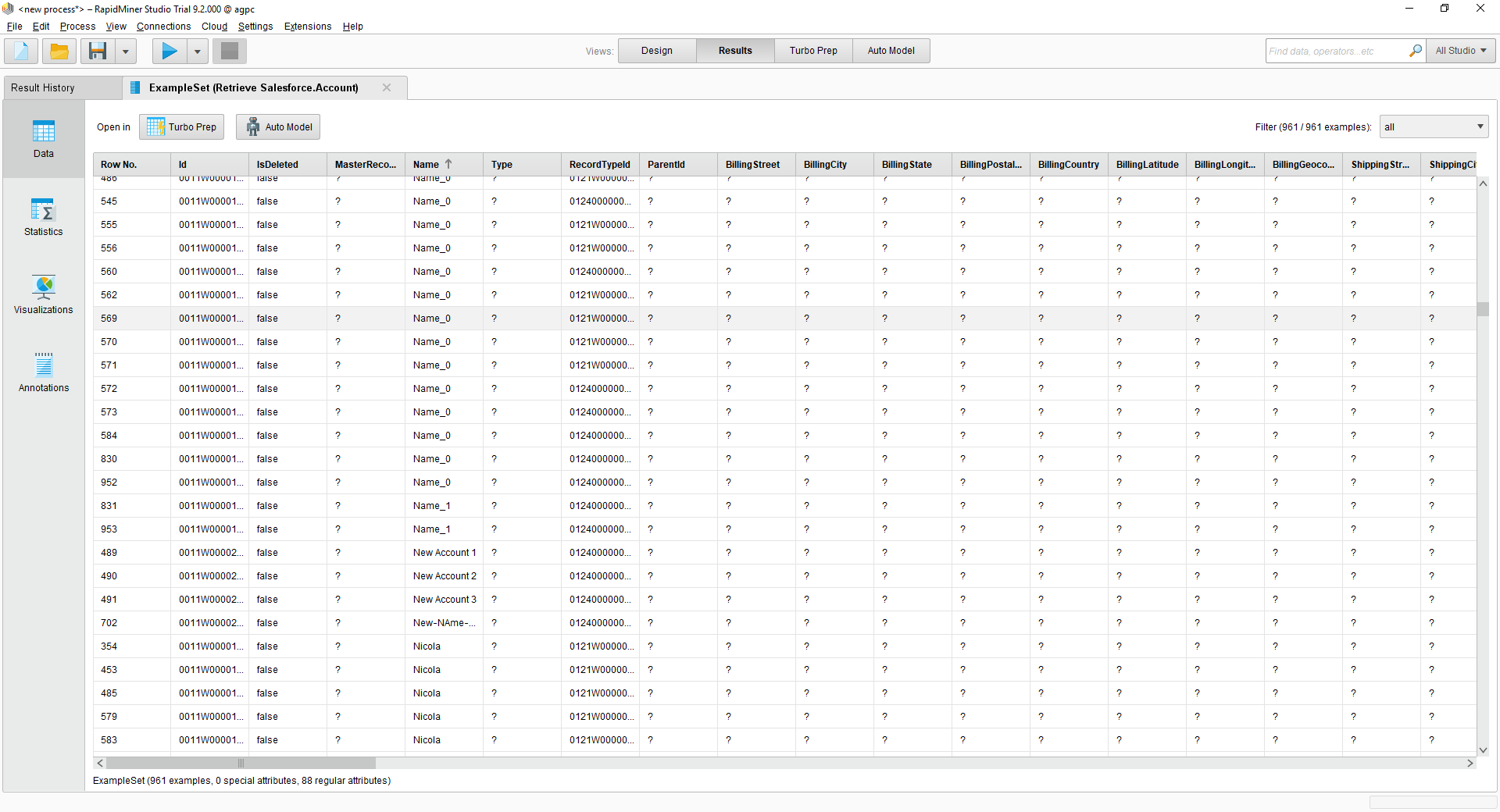Model Context Protocol (MCP) finally gives AI models a way to access the business data needed to make them really useful at work. CData MCP Servers have the depth and performance to make sure AI has access to all of the answers.
Try them now for free →Connect to Salesforce Data Cloud Data in RapidMiner
Integrate Salesforce Data Cloud data with standard components and data source configuration wizards in RapidMiner Studio.
This article shows how you can easily integrate the CData JDBC driver for Salesforce Data Cloud into your processes in RapidMiner. This article uses the CData JDBC Driver for Salesforce Data Cloud to transfer Salesforce Data Cloud data to a process in RapidMiner.
Connect to Salesforce Data Cloud in RapidMiner as a JDBC Data Source
You can follow the procedure below to establish a JDBC connection to Salesforce Data Cloud:
- Add a new database driver for Salesforce Data Cloud: Click Connections -> Manage Database Drivers.
- In the resulting wizard, click the Add button and enter a name for the connection.
- Enter the prefix for the JDBC URL:
jdbc:salesforcedatacloud: - Enter the path to the cdata.jdbc.salesforcedatacloud.jar file, located in the lib subfolder of the installation directory.
- Enter the driver class:
cdata.jdbc.salesforcedatacloud.SalesforceDataCloudDriver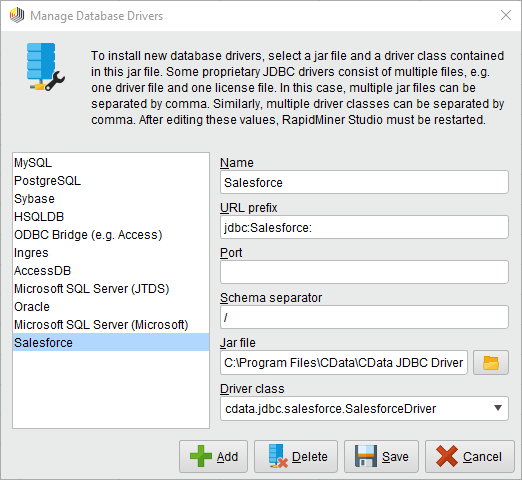
- Create a new Salesforce Data Cloud connection: Click Connections -> Manage Database Connections.
- Enter a name for your connection.
- For Database System, select the Salesforce Data Cloud driver you configured previously.
- Enter your connection string in the Host box.
Salesforce Data Cloud supports authentication via the OAuth standard.
OAuth
Set AuthScheme to OAuth.
Desktop Applications
CData provides an embedded OAuth application that simplifies authentication at the desktop.
You can also authenticate from the desktop via a custom OAuth application, which you configure and register at the Salesforce Data Cloud console. For further information, see Creating a Custom OAuth App in the Help documentation.
Before you connect, set these properties:
- InitiateOAuth: GETANDREFRESH. You can use InitiateOAuth to avoid repeating the OAuth exchange and manually setting the OAuthAccessToken.
- OAuthClientId (custom applications only): The Client ID assigned when you registered your custom OAuth application.
- OAuthClientSecret (custom applications only): The Client Secret assigned when you registered your custom OAuth application.
When you connect, the driver opens Salesforce Data Cloud's OAuth endpoint in your default browser. Log in and grant permissions to the application.
The driver then completes the OAuth process as follows:
- Extracts the access token from the callback URL.
- Obtains a new access token when the old one expires.
- Saves OAuth values in OAuthSettingsLocation so that they persist across connections.
- Enter your username and password if necessary.
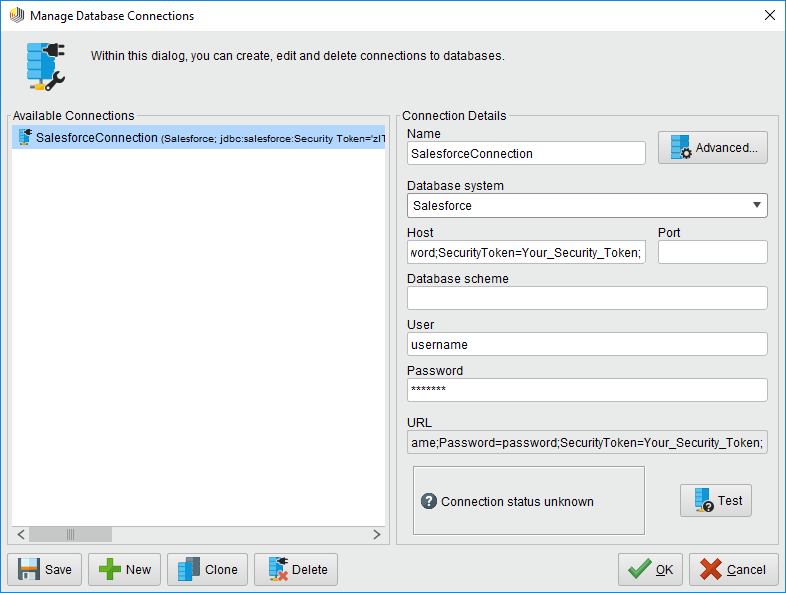
For other OAuth methods, including Web Applications and Headless Machines, refer to the Help documentation.
Built-in Connection String Designer
For assistance in constructing the JDBC URL, use the connection string designer built into the Salesforce Data Cloud JDBC Driver. Either double-click the JAR file or execute the jar file from the command-line.
java -jar cdata.jdbc.salesforcedatacloud.jarFill in the connection properties and copy the connection string to the clipboard.

A typical connection string is below:
InitiateOAuth=GETANDREFRESH
You can now use your Salesforce Data Cloud connection with the various RapidMiner operators in your process. To retrieve Salesforce Data Cloud data, drag the Retrieve operator from the Operators view.
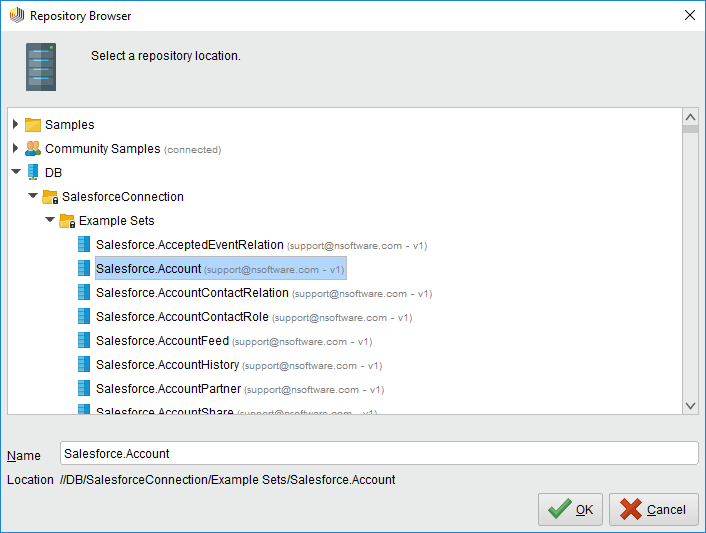 With the Retrieve operator selected, you can then define which table to retrieve in the Parameters view by clicking the folder icon next to the "repository entry." In the resulting Repository Browser, you can expand your connection node to select the desired example set.
With the Retrieve operator selected, you can then define which table to retrieve in the Parameters view by clicking the folder icon next to the "repository entry." In the resulting Repository Browser, you can expand your connection node to select the desired example set.
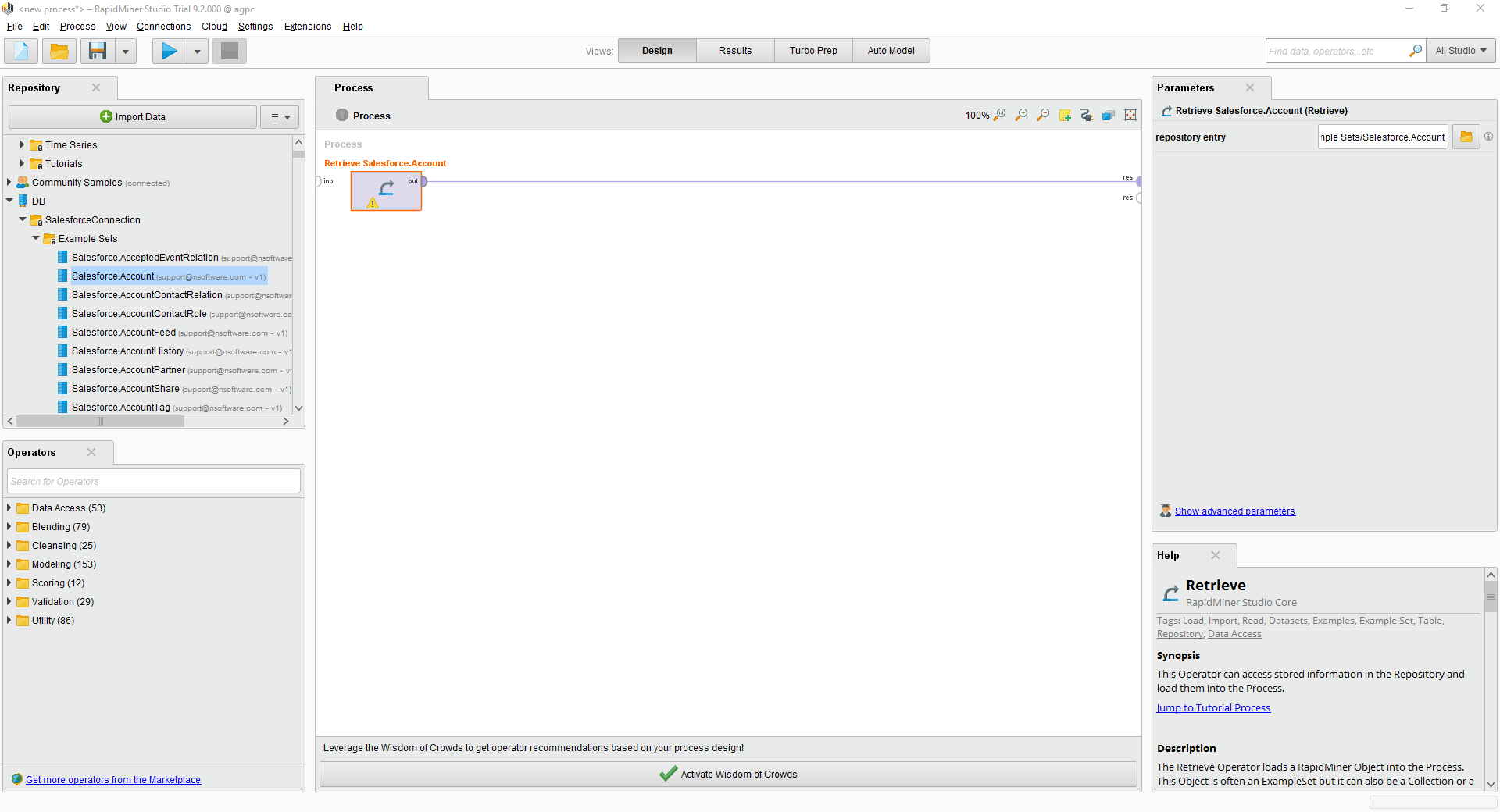
Finally, wire the output to the Retrieve process to a result, and run the process to see the Salesforce Data Cloud data.
